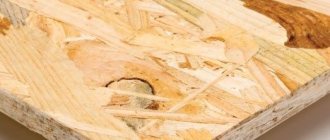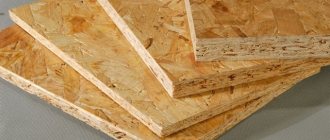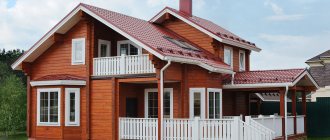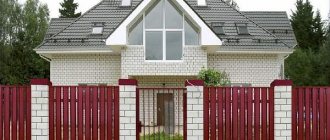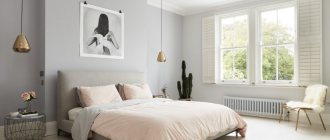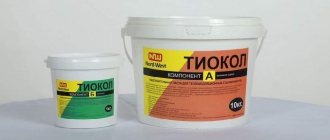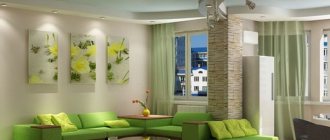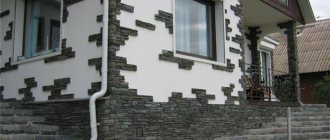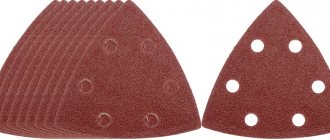How to choose a coating?
Varnish is usually used if you want to preserve the natural color of the lining, the look of real wood.
Water-based varnish is best suited - non-toxic, fire-safe, and easily adheres to the base. The texture of the varnish can be matte or glossy. And also to ensure that the wood does not darken, choose a varnish that is resistant to ultraviolet radiation. But if you prefer, on the contrary, a dark shade, it is better to choose a varnish with a clear shade. The base of the varnish should be water, most often it is acrylic varnish.
This varnish lays flat on the surface, looks impressive and protects the wood from damage, dirt, and fungus.
Choosing paint according to purpose
Paint for a living space is not always suitable for a kitchen. To figure out which option is right, you need to pay attention to the digital code in the labeling. Its first numbers indicate the special properties of the paint:
- 1 – weatherproof;
- 2 – intended for interior work only;
- 3 – used for metal structures, not suitable for lining or timber;
- 4 – resistant to hot water and steam, it is chosen for the bathroom and kitchen;
- 5 – special, for example, for leather;
- 6 – resistant to oil products and fats, rarely used in everyday life;
- 7 – insensitive to aggressive environments;
- 8 – withstands high temperatures, suitable for the kitchen;
- 9 – has electrical insulating properties;
- 0 – these are primers and enamels;
- 00 – putties.
Compositions that are resistant to steam or oil are more expensive than conventional ones. So you should buy them only for finishing special rooms.
Universal colors for the facade of a house
There is a range of shades that homeowners most often decorate their homes in.
At the same time, the organic combination of colors of the facade and roof is taken into account, otherwise the home will not look stylish and aesthetically pleasing. Here are the most popular colors for house facades:
There is a range of shades that homeowners most often decorate their homes in.
At the same time, the organic combination of colors of the facade and roof is taken into account, otherwise the home will not look stylish and aesthetically pleasing. Here are the most popular colors for house facades:
The best option is to paint the home in this color, which has a large number of shades: lemon, sunny, golden. By decorating your home in yellow, which is associated with a sunny day, you can get into a good mood in advance! The yellow tone looks great against the backdrop of fading nature in the fall and awakening vegetation in the spring.
Yellow house with white elementsSource landshaftdizajn.ru
White.
One of the most fashionable shades of any season and trend! Such a facade always helps to give buildings a special richness and decoration. In addition, white color is a “reservoir” of positive energy. The white facade looks organically with any color scheme for the roof and windows, and also provides a lot of opportunities for revealing numerous design ideas. The white shade can look harmonious among the surrounding greenery.
White house with wooden elementsSource www.pinterest.com
Green.
When a grass lawn is located around the structure, the house can be safely dressed in green tones. The bright facade will stand out among the snow-white plains and yellow autumn foliage. It is advisable to paint houses green that are not on the sunny side most of the day, otherwise the building will quickly lose the contrast of the shade.
Green facade Source www.remontbp.com
Although gray tones are associated with indifference and routine, many homeowners use them in painting facades. Only in this case it is advisable to add interesting accents that can dilute the main tone. Many owners decorate their roofs in a gray tone.
Combination of gray and whiteSource krov-torg.ru
The brown color scheme gives the facade some modesty and confidence with appropriate simplicity. This is not completely dark, but also a very warm shade.
Classic-style houses are not recommended to be dressed in provocative and bright colors. Also, buildings that have interesting architectural elements should not be painted with such colors, as the latter will lose their volume and charm. When choosing a facade color, it is recommended to rely on the following factors:
- surrounding landscape;
- original selection of shades;
- roof painting;
- general background.
Beautiful brown toneSource landshaftdizajn.ru
Guided by these parameters, you can easily obtain an amazing and unique appearance of any building that will harmoniously fit into the surrounding “ensemble” of colors. When choosing two colors for painting the facade, they must be completed in a relevant and harmonious manner. The combination of four or more tones under a bright roof is not allowed.
Today, modern manufacturers offer a wide range of shades in different materials for painting buildings, but do not forget about the tone of the roof. The organic design of the facade involves a combination of the shade of the roof with the shade of the external walls. A yellow facade, which is also resistant to dirt, looks optimal with any type of roof.
Color selection: recommendations
You should choose based on the selected design. For a classic style, transparent compounds are applied, leaving the natural color of the material. Scandinavian style involves painting in white, pastel or light shades.
Recently, it has been popular to apply several colors to the walls. If dark colors are chosen, the room will visually look smaller, and vice versa, if light shades are chosen.
What materials are used to paint the interior walls of a wooden house?
Interior painting is the final stage of finishing any building. Painting the inside of a wooden house takes on special significance. Painting not only performs a decorative function, emphasizes the beauty and color of a wooden structure, but also protects it. A tree needs protection indoors no less than outside. The coloring composition applied to the surface is a barrier to the development of any negative processes in the wood. However, for the product to work, you need to choose the right paint and apply it correctly. In the article we will look at coloring agents in detail, and also answer the questions: how to paint correctly, and what paint is best to paint a wooden house?
Why paint a wooden house from the inside?
Even the highest quality and most expensive wood, which is used to line the inside of a house, requires special processing.
In a residential area, the following have a negative effect on the surface:
- Constant temperature changes.
- Change in humidity.
- Serious mechanical impacts may even occur.
Naturalness is one of the main reasons when choosing wood for making your home. Despite the fact that such walls can breathe and living in such a house is a pleasure, a natural porous material, without proper protection, can last only up to 5 years.
The tree array will then become:
- Getting dark.
- Crack.
- Exposure to various bugs.
- Mold appears.
Advice: For the interior decoration of a wooden house, paint should be selected not only for decorative purposes, but even more importantly to protect the wood from the aggressive effects of harmful elements in the environment.
How to paint the inside of a wooden house: recommendations from experts
Wood is becoming increasingly popular in home construction. This material has some undeniable advantages. Firstly, wood is an environmentally friendly material. Secondly, it is easy and convenient to work with. But processing can be simple only if you are familiar with all its nuances.
For example, if you built a wooden house, then the question will definitely arise - how to paint the inside of a wooden house.
Of course, you can leave everything as is, because the tree has an attractive appearance. But in this case, the material will not be protected, which means it can quickly lose its qualities. The most inexpensive finishing option would be painting. It is beautiful, durable and uncomplicated. But what to paint the inside of a wooden house will be discussed in the article.
Why and how can you paint wood?
The wooden house itself has an attractive appearance. The texture and color of the material, one might say, does not need improvement. But still, all experts recommend covering wooden surfaces with various paints and varnishes.
Why is this necessary? The fact is that wood is a natural material. And everything natural, even after drying, still remains an attractive environment for various biological species. Molds and some types of insects thrive on wood.
In addition, wood allows walls and other elements of the house to breathe. On the one hand, this circumstance helps, but on the other, it can harm. The hygroscopicity of wood can play a bad joke. Over time, surfaces warp or collapse. In addition, this material does not tolerate temperature changes well.
All of these negative characteristics can quickly ruin your new home. To prevent this from happening, all surfaces are treated with various paints and varnishes.
What can be used to protect wood? There are several options here, namely:
- First of all, oil paints come to mind. Such materials perfectly protect the surface from external influences. But oil paints have several serious disadvantages.
Firstly, they completely cover all the beauty of natural wood. Secondly, oil paints take a long time to dry and at the same time emit an unpleasant odor;
- special impregnations. These materials are for protection purposes only. Such impregnations do not change either the texture or color of the wooden surface. Their main goal is to protect the material from biological hazards and fire;
- various varnishes. Here you can choose both translucent and completely transparent options. Varnishes perfectly protect wood from external influences, without spoiling its natural beauty.
When choosing a material for interior painting work, you should be careful. The fact is that the interior is poorly ventilated, so varnishes and paints must meet the following requirements:
- they should not contain toxic substances;
- must be environmentally safe for both human health and the health of domestic animals;
- paints and varnishes should not have a strong odor. This is especially important if people already live in the house. If the smell is too strong, problems with the well-being of household members may arise.
Note! In terms of safety for health and the environment, water-based paints and varnishes are excellent.
Such substances dry quickly, highlight the natural texture and colors of wood well, plus they do not have a pungent odor or toxic components. Another advantage of such paints is their low cost.
Alkyd paints and varnishes have become very popular lately. Thus, urethane-alkyd substances are often called the best material for yachts. The fact is that such varnishes perfectly resist various external influences, both mechanical and chemical. This coating can easily withstand even sea water.
Note! Alkyd paints and varnishes have a slight drawback; such substances take a very long time to dry. It may take a day or more from painting to the possibility of further work.
Whatever paint and varnish options you choose, it is very important to apply them correctly. Otherwise, such coverage will not last long enough, which means all your costs and efforts will be wasted.
Recommendations for painting wooden surfaces
How to properly paint wooden walls, ceilings or floors? What are the nuances of performing such work? First of all, you need to prepare the surface.
If it was already covered with something, then you need to get rid of this layer. To do this, you can use a wire brush or grinder. After such treatment, it is better to rinse the surface with water to remove all dust and small debris. Only after the wood has completely dried can you begin further work.
After removing the old coating, all walls are thoroughly cleaned of dust and wood shavings. After this, an “audit” of all surfaces is carried out to detect traces of mold contamination. If such are found, then the place must be treated with an antiseptic and antifungal agents. If the area is severely affected, it must be replaced.
Important! Particular attention should be paid to places where the wood has dried out. This is where the cracks appear. If moisture gets into them, the surface will quickly become unusable. These places must first be puttied. Fallen knots are also subjected to this treatment.
To avoid spoiling the appearance, you need to work with nails. Their caps need to be buried in wood. As a rule, such work is carried out at the stage of construction or installation of finishing materials.
Before painting, it is necessary to prime the surface. Wood has a porous structure. If you do not apply a primer, then the consumption of paint or varnish will be quite large. And the work itself will become significantly more complicated. It is better to choose a primer with deep penetration. This way you can save significantly on paint and varnish materials. Remember that painting can only begin after the primer layer has completely dried.
Video: Interior decoration of a timber house with water-based glaze
The paints themselves are applied using a paint brush or roller. It is worth remembering that one layer is most often not enough. Therefore, each surface will need to be treated two or three times. In this case, each subsequent layer is applied only after the previous one has completely dried.
If the surface has a large area, then it is better to use a pneumatic spray gun. With its help, you can process large surfaces faster and with better quality. For a spray gun, a solution with a thinner consistency is used. In this case, it is necessary to ensure that no drips or gaps form. Otherwise, the appearance may be seriously damaged.
Particular attention should be paid to painting wooden floors. It is best to carry out this work in the warm season. In this case, you can open the windows and ventilate the room well. Painting the floor begins from the corner farthest from the door, gradually moving towards the exit.
In addition, it is worth listening to the recommendations of experts. Here are just a few of them:
- It is advisable to use glossy or matte compounds. Thus, you will not harm your appearance, but even improve it;
- Any paint and varnish material that you are going to use must contain substances that will protect the wood from the effects of mold fungi and insects. It is also desirable that the coating protects against fire;
- Pay attention to the paint or varnish manufacturer. It is best to choose well-known brands. In this case, you will have a guarantee of the absence of harmful and toxic substances in the paintwork;
- When choosing a coating material, you should take into account the characteristics of the room and the wooden surface itself. For example, when painting a floor, it is better to use wear-resistant paints and varnishes.
And if you need to treat the surface in a damp room (bathroom or kitchen), then it is better to give preference to a material that protects the surface well from water.
If you follow all the rules and recommendations from specialists, then the new coating of internal wooden surfaces will not only please your eyes, but also serve for many years.
Video: How and how to paint a wooden house
Projects of wooden houses with a terrace or veranda
Number of projects 1535 Available at the exhibition
- 5 rooms
- 2 bathrooms
Belaya Dacha House Project
To favorites
- 178² Total area
- 9 x 13m Construction area
from 1,670,000 rub. Construction period 21 days
- 7 rooms
- 3 bathrooms
House Project No. 16142
To favorites
- 361² Total area
- 20 x 14m Construction area
from RUR 12,304,736 Construction time individually
- 2 rooms
- 1 bathroom
Log house project 6x9 m
To favorites
- 120² Total area
- 6 x 11m Construction area
from 525,000 rub. Construction time individually
- 4 rooms
- 1 bathroom
House Project Naples
To favorites
- 128² Total area
- 10 x 8m Construction area
from 1,519,000 rub. Construction time individually
Project Baths made of timber AR-034
To favorites
- 28² Total area
- 6 x 6m Construction area
from 378,000 rub. Construction period 90 days
- 5 rooms
- 4 bathrooms
Project of the Vasilisa House
To favorites
- 200² Total area
- 13 x 11m Construction area
from 5,000,000 rub. Construction time individually
- 3 rooms
- 1 bathroom
Catalina House Project
To favorites
- 90² Total area
- 6 x 6m Construction area
from 329,000 rub. Construction time individually
- 5 rooms
- 2 bathrooms
Victory House Project
To favorites
- 183.5² Total area
- 10 x 10m Construction area
from 3,543,000 rub. Construction time individually
- 6 rooms
- 2 bathrooms
House Project Solnechny-2
To favorites
- 162² Total area
- 11 x 12m Construction area
from 2,187,000 rub. Construction time 83 days
- 5 rooms
- 2 bathrooms
Mon Repos House Project
To favorites
- 207² Total area
- 11 x 14m Construction area
from 4,187,700 rub. Construction time individually
- 3 rooms
- 3 bathrooms
Stealth-200 House Project
To favorites
- 200² Total area
- 10 x 10m Construction area
from 2,700,000 rub. Construction time individually
- 2 rooms
- 1 bathroom
Bathhouse project Privat-banya
To favorites
- 114² Total area
- 11 x 8m Construction area
from 1,539,000 rub. Construction period 50 days
- 6 rooms
- 2 bathrooms
House Project Azure 12.2*11.8
To favorites
- 216² Total area
- 12 x 12m Construction area
from 2,038,584 rub. Construction time individually
1 room
Sanduny Baths Project
To favorites
- 17² Total area
- 4 x 6m Building area
from 320,000 rub. Construction time individually
- 3 rooms
- 1 bathroom
Project of House Barvikha-113
To favorites
- 213.1² Total area
- 10 x 14m Construction area
from RUR 2,876,850 Construction time individually
- 4 rooms
- 2 bathrooms
Astoria House Project
To favorites
- 154² Total area
- 8 x 10m Construction area
from 3,474,900 rub. Construction time individually
- 6 rooms
- 2 bathrooms
Project of the Golden Key-3 House
To favorites
- 140² Total area
- 9 x 11m Construction area
from 1,890,000 rub. Construction time 73 days
- 3 rooms
- 2 bathrooms
Zavetnoe House Project
To favorites
- 219² Total area
- 10 x 12m Construction area
from RUR 1,661,742 Construction time individually
- 4 rooms
- 1 bathroom
Log House Project SR-051
To favorites
- 158² Total area
- 9 x 11m Construction area
from 2,133,000 rub. Construction period 90 days
- 2 rooms
- 2 bathrooms
Bani Vasilek project
To favorites
- 60.62² Total area
- 8 x 5m Construction area
from 818,370 rub. Construction period 37 days
View all projects
To choose the right product, you need to study its composition and properties Source elka-palka.ru
The most successful color duets
A non-standard approach to wall design will allow you to diversify the decor in the room and make the atmosphere in it more lively. A separate line today in painting walls with two colors is contrasting solutions. Creative people who are not afraid of bold ideas decide to combine the incongruous. If you want to join their caste, try the current combination of black and white. You can go further and play on the opposition of red and black or combine crimson with purple. How interesting the interior will be after painting the walls in these two colors, look at the photo.
Contrasting coloring will diversify the decor in the room
The more conservative part of the audience will be impressed by completely different combinations, characterized by calm colors.
What do designers offer in the new season?
Mix everything and everyone, but in reasonable tandems.
White color will look great paired with blue, yellow, and bright green shades.
Brown colors should be added to lilac, as well as the freshness of cream and the cheerfulness of yellow.
Painting the walls in two colors such as:
- coffee and caramel;
- milky and rich chocolate;
- cream and grey.
Stylish combination of cream and gray
Rooms with such walls are especially warm and cozy.
A mix of beige and rich turquoise will create a bright atmosphere with a claim to originality.
Mix of beige and juicy turquoise
When painting walls in two colors, you can combine the yellow, orange and red spectrum. It will turn out fun and lively, just what you need for a game room.
Complex purple also did not stand aside. Its depressiveness is perfectly softened by shades of beige.
The depressiveness of purple is perfectly softened by beige
How to calculate the required amount of paint
Any repair or construction must begin with an estimate and detailed instructions. Consumables, such as paint for lining, must be purchased in reserve. When making calculations, one should take into account the characteristics of the surface, tools, professionalism of the work performers, the number of layers and the texture of the mixture.
- We take away the area of doors, windows, openings and other untreated surfaces.
- The result obtained must be compared with the standard consumption of the selected type of paint.
- Manufacturers place this information on the product label.
- You need to understand that the quantity is indicated taking into account the work under ideal conditions, for one layer of painting.
Things to consider with a wood painting job
Processing and painting of wooden surfaces must be carried out using products designed for working with wood.
A hand tool must be carried along the fibers for uniform coating with the composition.
All work with wood is carried out at low humidity and in a ventilated area.
Tips for choosing coverage
When planning to paint the inside of houses, it is important to decide: what is the purpose of such treatment? Depending on the idea, different options are used. For greater ease of understanding, methods of interior finishing of wooden buildings are presented in table form.
| Reason for painting the inside of a wooden house | Preliminary preparation | Type of coating, its advantages and disadvantages |
| Uninteresting texture of the material, desire to obtain a different color from the natural color of all surfaces | Sealing existing defects with special putty, sanding to a smooth surface, priming | Topcoat paints of any type. They create the necessary color effect and protect the wood from external influences. They hide the natural texture of the material and do not allow it to “breathe” (with the exception of some specific coatings) |
| Highlighting a zone with a color different from the main one | ||
| Restoring the look of old lumber | Thorough cleaning with a grinder or (in case of deep damage) with a plane, sealing defects, grinding. The type of pre-treatment depends on the chosen coating - stain and/or impregnation for varnishes, primer/drying oil for paints | Varnish with pre-impregnation or stain treatment. Highlights the natural texture of the material and protects from external influences. Requires careful surface preparation and maintenance |
| Topcoat paints of any type. Hides stains and color defects, protects the material. They hide the texture of lumber and degrade the natural properties of wood. | ||
| Protecting new wood with a decorative effect | If preparation is insufficient (smoothness, absence of defects), carry out additional procedures - sealing unevenness, grinding, degreasing, removing dust | Varnish of any type (depending on the desired effect) over impregnation (stain) in two or more layers. Highlights the texture of lumber, protects against damage, and retains the natural characteristics of the material for a long time. Reduces the “breathing” properties of wood, requires careful preparation and care |
We also allow the option of treating lumber only with natural impregnation (wax with linseed oil, pure wax, natural oils, drying oil, etc.) without painting the interior of the wooden house. However, it provides a lower level of surface protection and requires maintenance. Once every 0.5...3 years (depending on operating conditions), it is necessary to renew the impregnation after sanding and stripping the wood.
Bedroom decor
Don't overload the space and fill the room with cute trinkets.
The choice of decorative elements depends on the chosen style in the room.
Items that have practical value are also suitable for decoration:
- Lamps of unusual shape;
- Watch;
- Cover;
- Curtains;
- Carpet;
- Soft pillows;
- Candlesticks;
- Natural flowers.
Textile accessories are most harmoniously combined with natural wood - the fabric should be natural.
Handmade items are welcome.
Design work is an exciting activity. And the result will please you for a long time. With some effort, you can create a cozy and beautiful room that will promote good rest and sound sleep.
Color inserts
This is another method of painting with imitation panels. First, the wall is painted with paint of one color. After drying, future “panels” are marked. Masking tape is glued along these lines. The inside of the resulting squares or rectangles is painted over with a second color - usually darker, but a variety of solutions are possible. The tape is removed before the paint dries. Painted “panels”, as a rule, are framed with moldings, strips, and borders.
This wall decoration is ideal for classic, baroque and glamorous interiors. Wall decor is usually placed inside the “panels”: for example, clocks and sconces.
Ideas for painting walls instead of wallpaper
To choose the right color scheme and method of painting the walls in the bedroom, you need to take into account not only the preferences of the owners, but also the size of the room, the height of the ceilings, the number of window and door openings, the design of other surfaces of the room, combination with furniture and textile design.
There are several options for painting the walls in the bedroom:
- Horizontal division is the easiest way. The wall is divided into parts and decorated in different colors. You can make two equal parts or increase one at the expense of the other. The so-called panels will look elegant when the color border runs just below the middle. The demarcation can be made using a border or molding.
- Colored inserts are a fashion trend. Ideal for glamorous or classic interiors. First, the wall is painted in one color, and then a rectangular or square marking is made, which is decorated with darker paint.
- A striped wall is another modern fashion trend. The stripes can be located in any direction. But there is a nuance: too narrow stripes will look very strict, and bright ones will be intrusive. You can make a combination of several related shades. This design is ideal for a retro interior.
- An emphasis on one wall is a bold and stylish decision. It will make your bedroom design original and help you get away from excessive saturation. One wall is painted in a bright color or one bright stripe is made, and the remaining walls are done in neutral shades.
- Polka dots are a good idea not only for a bedroom, but also for a nursery or living room decorated in a retro style. Polka dots are easy to apply using a stencil.
- Complex coloring involves the use of many shades. Usually performed in the form of an arc, zigzag or wave. These lines can follow the outlines of furniture or decorative items.
Painting: features and nuances
Having chosen what to paint the wooden lining inside the house with, they begin the painting process. In order for the result to be of high quality and delight the owners for many years, the following preparatory work must be completed:
- Stock up on tools. You will need paint brushes and a tray, the chosen paint material, a roller with interchangeable attachments, a bucket, fine-grained sandpaper and protective gloves.
- Clean the surface. The lining is cleaned of dust, dirt, and old coating with a stiff brush or pumice stone, then treated with sandpaper.
- Degrease the wood. Treating the surface with an alkaline detergent will improve the adhesion (adhesion) of paint to wood.
- Perform grinding. You can level the surface using pumice, sandpaper or sanding mesh. The defects are first filled with putty, and the resin is removed with a solvent.
Minimum set for painting wooden panelsSource sovkalmykia.ru
- Pre-treat the lining. A primer is applied, and after it dries, an antiseptic impregnation is applied. The process can be accelerated if you purchase a combination composition that combines both products.
- Paint the walls. After waiting for the primer and antiseptic to dry, begin painting. Paint for lining inside the house is applied in two or three layers. The number of layers depends on the selected material and is indicated in the instructions. It is possible to paint wooden panels well before installing them on the walls, but this is not always possible (the procedure requires a large awning or canopy).
About painting lining in different colors in the following video:
Painting options for inside a wooden house
Painting wooden walls inside a house is possible in two ways:
- A perfectly smooth surface obtained using the first method will retain its attractive appearance for at least ten years, but will require large financial and time costs. With this method, the wooden surface is sanded twice: roughly and finely. Next - treatment with an antiseptic, primer and two-layer coating with varnish or paint by spraying.
- In the second method, the surface is roughly sanded, treated with an antiseptic and painted in two layers. After 5-6 years it is simply painted. This method is more economical and faster.
Useful tips for painting lining
Some subtleties of the workflow will help make painting better.
When processing wooden panels, the following points are taken into account:
- The use of paint and varnish compositions with complex action will help reduce the cost of painting. Tinted varnish or oil-wax is more expensive, but the effect of its use will be greater.
- Pre-impregnation of the lining should be done on all sides, this will significantly enhance the protective effect.
- When working with oil paint, you should take into account its tendency to change color (fading). To prevent color changes from becoming noticeable over time and spoiling the interior, you should choose darker, more saturated shades.
- It is better not to paint on a hot day, as the coating will dry too quickly and apply unevenly (spots of varying saturation may remain).
- In order for the coating to be uniform in color, the mixture must be stirred periodically during operation.
The coating is applied along the fibers of the liningSource nauka-i-religia.ru
- To ensure that the color of the walls is uniform, you can add the color of the finishing material (paint) to the primer.
- When choosing a paint composition, the total costs are taken into account: not only its cost, but also the recommended number of layers, as well as paint consumption per 1 m².
Painting a house: choosing a coating
Paint and varnish compositions for interior work can be natural (impregnations) or synthetic (paints).
Natural varnishes and paints are produced on the basis of natural oils or water. At the same time, natural wood impregnations can be transparent and tinted.
To paint the interior of your home, it is better to use natural-based paints that do not contain substances harmful to health.
You should choose a coating based on its purpose in the room. Water-based paint is good for the walls of living rooms, but for the floor it is better to use more wear-resistant compounds.
Pokarska in light colors
Many manufacturers also include substances in their coatings that can protect the surfaces being coated from the formation of mold; this is worth paying attention to.
The color scheme is a purely individual matter. Options for painting a house can be very different. In terms of structure, the shade of the coating can be:
Everyone chooses house painting colors to their own taste. Here we will only replace that all shades of color are divided into cold and warm, matte and glossy.
Choosing a color for painting the lining
Walls lined with clapboard are the backdrop for creating the interior of a country house, so choosing the appropriate shade is a task no less important than choosing the optimal paint and varnish composition. To ensure that the choice of color for wooden panels does not disturb the harmony of the design, the following rules are followed:
- For the walls, choose a shade that differs no more than a few tones from the color of the ceiling and floor. Contrasting transitions will harm the overall style (only if the interior is not designed in any of the avant-garde styles).
- White color is a classic way to expand a space and make it lighter. It adds elegance to the interior, goes well with other shades and hides surface defects well.
Warm colors are welcome in bedroom designSource bookdifferent.com
- In the design of the living room and kitchen on walls decorated with clapboard, light and warm shades look best: cream, peach, brown.
- The children's interior allows the use of bright colors (for which high-quality and safe acrylate paints are ideal). In the bedroom, walls lined with wood panels are varnished in natural shades or soothing colors - lilac, beige, honey. Gray-blue or brown-green colors are suitable for decorating the walls of the office.
Painting in two colors
The main rule of combined coloring is a reasonable combination of colors.
There are 3 options:
- degrade - a combination of different shades of the same color:
- related shades - neutrals, pastel colors, black and white;
- a combination of different colors, taking into account their saturation and classification as cold or warm shades.
The following colors have the best compatibility for the bedroom:
- Gray is perhaps the ideal “sleeping” color. The main thing is to choose the right shade: a beautiful aristocratic one, emphasizing the owner’s sense of taste and style. Its combination with almost any other color will look decent.
- White - thanks to its ability to get along with any shade, you can come up with the most original color combinations: from calm pastels to bright and rich ones. The design of such a bedroom can also be either simple or ornate.
- Yellow is unique for its opposite properties: on the one hand, it energizes, and on the other hand, it relaxes. For yellow to show its calming qualities, it is recommended to combine it with pale blue, gray or white.
The paint combines excellent appearance and protection of wood
The reasons that motivate you to change the classic color of wood to multi-colored lining can be divided into objective, independent of us, and subjective - personal.
The first category includes:
- the influence of sunlight - the wood turns gray;
- poor ventilation - dampness causes cyanosis.
If you can get rid of gray plaque by sanding, then against blue spots you will have to use the chlorine-free product “Active Oxygen” or chlorine. In any case, updating a finished wall or ceiling covering is extremely inconvenient.
Blue color on wood is a sign of mold
Subjective reasons include:
- desire to change the interior;
- incompatibility of the natural color of wood with the chosen style.
Stylish transformation of cladding
Colored lining has greater opportunities to be used in a variety of interior styles, where the color of natural wood does not fit. Perhaps the most naturally painted board looks in the Scandinavian and Provence style, in which preference is given to natural materials.
The sofa contrasts with the Scandinavian restraint of the walls and ceiling
The restrained spirit of the Scandinavian style will suit a plank ceiling with massive beams and walls completely lined with horizontal light lining. And the warm colors of the curtains, sofa cushions and, of course, the fire in the massive fireplace.
Provencal “instructions” suggest painting in any muted tones - ivory, lilac, mint, cream, blue. Some monotony is enlivened by the floral print of the upholstery, ruffles on the curtains, and lush bouquets.
A light ceiling and delicate mint on the walls - a feeling of light and cleanliness in a Provencal-style kitchen
The lining of a dark, almost black color will fit into the style of Japanese minimalism, which divides the interior space with color, light and conventions. The sacred space for their tea ceremony or our lunch is highlighted by a dark square of flooring and a similar clapboard splash of color on the ceiling.
The photo shows how dark floor and ceiling boards highlight the functional area of the dining room
Brushed, tinted lining will be in place even in an inconsistent loft style, where ultra-modern technology shines amid rough brickwork. A wall/column covered with tinted wood with relief veins will be akin to a work of art.
The lining around the windows in a loft interior is a kind of insulation
Kitchen interier
It is advisable to place the kitchen next to the living room. This may be a separate room or an isolated space. When decorating a kitchen, the following recommendations should be followed:
- the kitchen set should be practical on the one hand, and serve as an interior decoration on the other hand; the solution to this problem will be choosing a bright color for the furniture;
- a tabletop from a practical, durable material - stone or a polymer analogue;
- the apron can be protected with ceramic tiles with a brickwork pattern;
- The floor should also be practical - ceramic tiles or natural stone will cope well with this task; to heat the room in the cold season, you can provide a heated floor based on a water system;
- cabinets lighter, make their doors glass;
- to maintain the general atmosphere of a country house, hide the built-in equipment behind wooden facades ;
- think over cozy and at the same time practical lighting - install lamps in the cooking area - near the stove and work table, and also illuminate the dining area or bar counter.
Further care
After painting, surfaces need proper care. It will extend the life of the finish. Without special care, it is impossible to maintain the beautiful appearance of the walls for a long time. In the first two weeks after painting, the walls cannot be cleaned, as the paint dries completely within 7-10 days.
Only special cleaning products should be used to clean the surface. Water-based and water-dispersion coatings are gradually washed off with a regular wet cloth. Glossy surfaces can only be wiped with a dry or damp cloth.
Following the above recommendations and rules, you can paint the walls in a wooden house with high quality. This type of finish must be properly maintained so that it remains beautiful for as long as possible.
What are the characteristics of the material?
Before you think about how to treat the lining on the balcony, you need to understand this material and what properties it has.
The main advantages of lining for loggias and balconies:
- long period of use and storage;
- high thermal insulation parameters;
- good sound insulation in the room;
- quite presentable appearance, so that the lining can be used to create different styles in the room;
- humidity will be distributed evenly in the room where this material is installed;
- a pleasant aroma that spreads into the room (the smell of trees and forests).
However, lining also has its drawbacks. For example, over time the wall will gradually darken. The original beautiful appearance of the loggia or balcony will lose its novelty. This change in appearance is due to the influence of environmental factors.
If you treat the lining with a special coating in time, you can prevent the aging of the walls. And for processing you can use various antiseptics, varnishes and paints. In addition, the coating is used not only to extend the life of the material indoors.
Material processing must be carried out in cases where it is used in finishing work on building facades. This is due to the fact that the lining is influenced by environmental factors, especially in severe weather conditions.
In this case, bacteria and fungi begin to settle on the surface of the material. And mold will very quickly corrode material that has not undergone additional treatment. In addition, ultraviolet radiation also has a destructive effect.
The fact is that the resin in such wood is a very effective antiseptic of natural origin. So this resin will independently protect the walls from moisture and microorganisms. And special means are necessary to ensure that the material lasts longer and looks good.
Mezzanine bedroom in a small wooden house
If the area is small, a cozy and unusual bedroom can be made on the mezzanine. To do this, a wooden structure is created in an ordinary room, fencing off part of the space near the ceiling.
The ceiling in a bedroom with log walls can be covered with “block house” clapboard, which will emphasize the relief of the surfaces.
- Space saving;
- Combination of several functional areas in one room;
- Creating a cozy nest.
This option fits harmoniously only into the interior of small houses; in spacious rooms, a mezzanine bedroom looks strange.
The eastern side will suit those who like to contemplate the first rays of the sun, while the western side will suit those who prefer to sleep longer.
Advice! In a mezzanine bedroom, discard any furniture: just a mattress, lighting fixtures and a couple of decorative elements that will create a truly comfortable tiny bedroom.
How often should you repaint?
The frequency of repainting wooden surfaces depends on the quality of the preparatory work, the composition applied to it, and the condition of the wood.
The service life of high-quality decorative coatings can exceed 10 years, even when used on facades.
Antiseptic treatment will extend the service life of wooden surfaces. Even walls that have turned gray over time, if properly treated, can be restored to their proper form. Many types of decorative coatings give room for imagination in the design of wood walls. The noble and aesthetic appearance of wood is always in demand in home decoration.
Features of working with wooden walls that have turned gray over time
Wood that has aged over time loses its original color and requires a more careful approach to its preparation and decoration. The gray color of wood indicates that the process of destruction has begun under the influence of external factors and microorganisms.
Surface preparation work
The main stages of preparation for painting gray walls:
- removing the old decorative coating mechanically (using a spatula or brush) or chemically (special cleaning agents are a more effective method that renews wood, but they are not recommended for use indoors);
- if the darkening has affected only the top layer of wood, it can be lightened using special lightening compounds or whiteness;
- sanding to a light, natural shade of wood using special attachments on a drill or grinder (initially a coarse-grained attachment is used, final sanding is done with a fine-grained attachment);
- cleaning surfaces from dust using a vacuum cleaner;
- sealing cracks with special putties; under the varnish coating, putty is used to match the color of the wood;
- applying a primer with the obligatory addition of antiseptic components; it is advisable to match it to the tone of the decorative coating that will be applied on top.
When painting gray coatings, it may be necessary to replace individual elements due to their deep damage.
Which paint is better to choose
Due to the beginning of a change in the structure of old wood, it is not recommended to coat it with varnish or matte paint, which may not hide the aging.
For old wood, it is preferable to use glossy or semi-gloss finishes.
It is advisable to use a decorative coating with a dense texture and improved covering ability.
Due to improved protection and coverage, it is preferable to use oil or acrylic paints for painting facades made of old wood. Acrylic ones are more expensive, but do not fade and adhere well to the surface.
What color to paint dark and dull walls
After careful preparation of the walls, there are no special restrictions in the color palette. It is recommended to apply paint and varnish mixtures in at least 2-3 layers, allowing each layer to dry completely.
Preparing the house for painting
A darkened surface can be bleached using special bleaching compounds. For the same purposes, ordinary cheap white is suitable, which will provide the same effect as more expensive special means. Large and small cracks are sealed with acrylic-based putties for exterior use. If the surface is to be painted in the future, putty of any color is suitable; under the varnish coating it is better to use products that match the wood.
Main stages of preparatory work:
- Old peeling paint is cleaned off with a wire brush or spatula. You can also use chemicals designed to clean the surface. The mechanical method is faster, and the chemical method takes longer, but is more effective. After chemical treatment, the old log structure will look like new.
- Uneven and rough surfaces are sanded to good light wood. To do this, use a grinder with a special attachment. If there are any unevenness left on the wood after sanding, they are smoothed out with coarse sandpaper.
- Next, a primer is applied. To protect wood from the appearance of fungus and mold, it is better to paint it with a primer composition with antiseptic additives. It is advisable to use a primer that matches the color of the paint that will be used to paint the house.
Rubber paint for a wooden house - colors and application
Our domestic manufacturers have long been producing high-quality rubber paints that are used for durable painting of various wooden structures. Rubber paint has a wide choice of colors and can be tinted in any beautiful color if desired. But, it is best to choose a paint color from the proposed catalog and standard color samples.
Watch the colors in the video:

